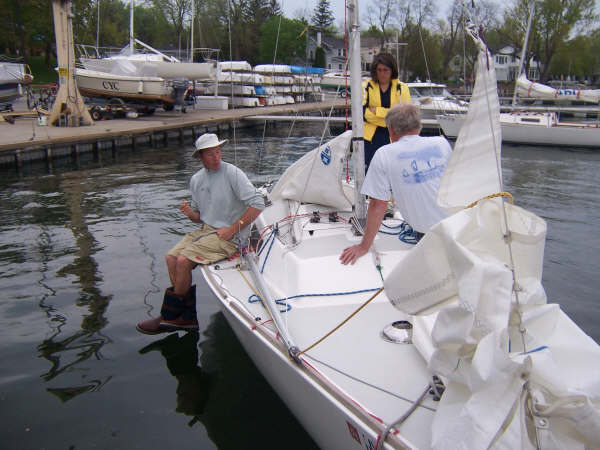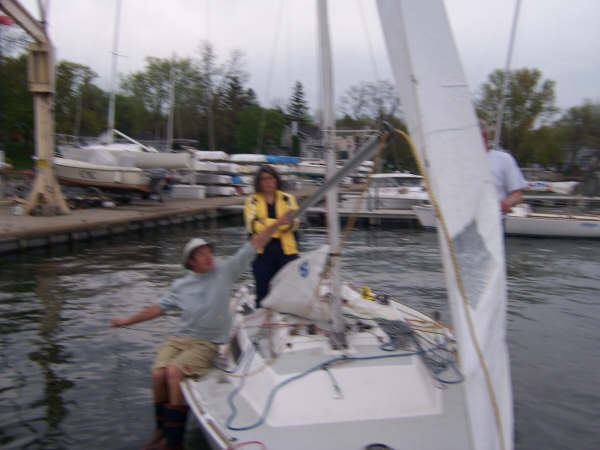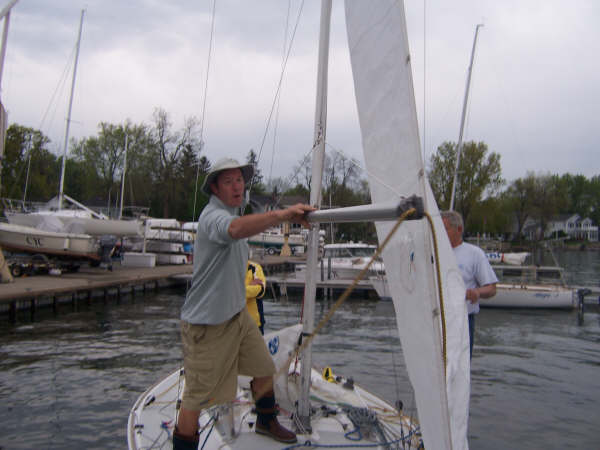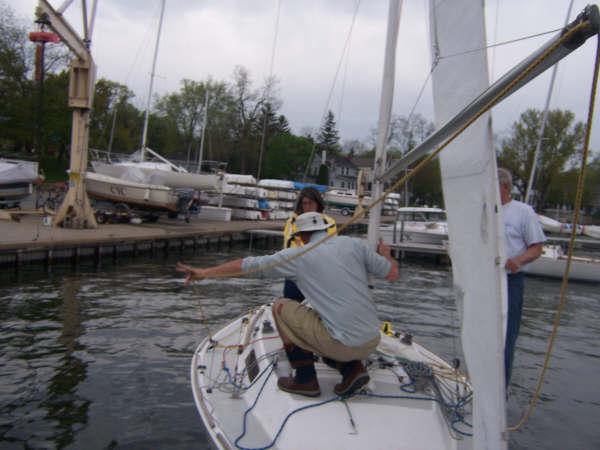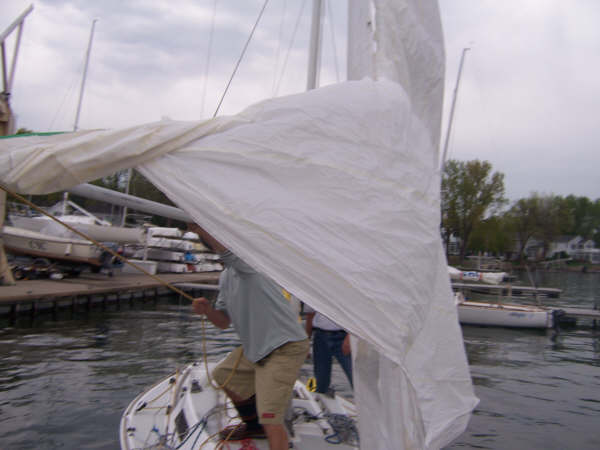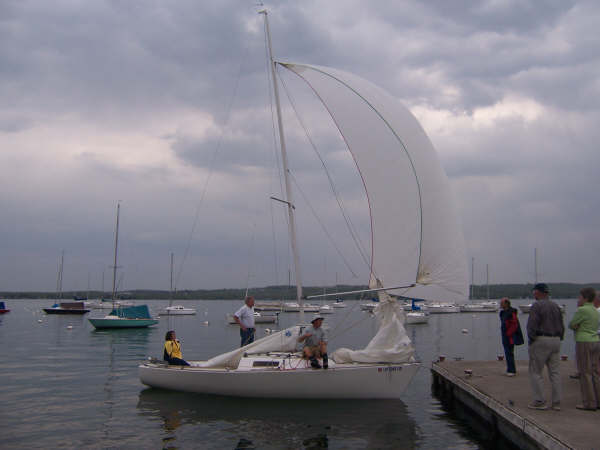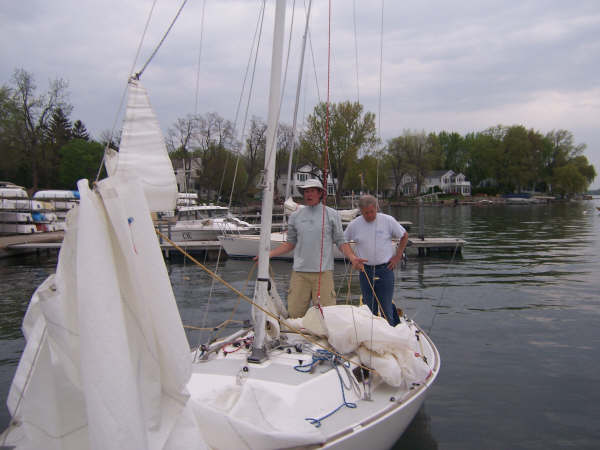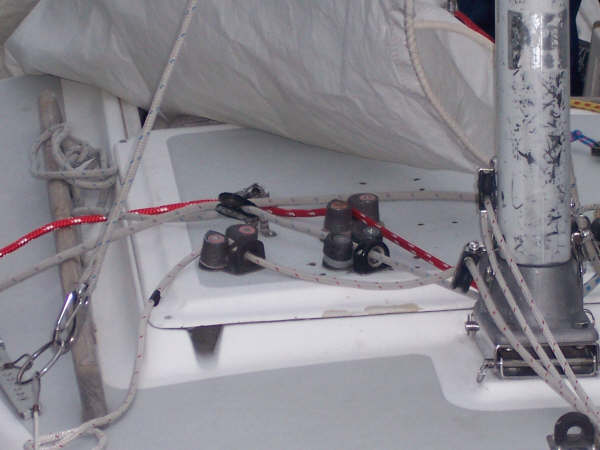

![]()

Spinnaker basis clinic
Video clips of the boat tied to the dock was taken from a digital camera can be down loaded. It is a .mov file and can be played using real player as well as several other players. The files are large. launch (8.3 mbyte) trim (50 mbyte)
Light, but shifty winds, allowed us to tie a boat to the dock so Justin could go over the finer points of spinnaker handling.
He started at the foredeck position with the crew sitting on the rail. From that position the pole was launched to a preset position that places the pole about 90 degrees to the mast in anticipation of the launch. Marking the pole lift helps. At launch the crew stands on the cabin top to pull the halyard at the same time making sure the pole is kept forward to meet the clew of the sail. During the launch the trimmer literally throws the spinnaker out of the basket and away from cabin. The move must be coordinated with the halyard. The jib can be used to guide the spinnaker somewhat including providing a path around the front of the boat. Proper jib trim helps. The foredeck then drops the jib by releasing the halyard and pulling down on the leach and clew. The clew is centered on the deck with the sheets. The jib need not be completely flat on the deck nor pulled down the forestay all the way.
At jibe time the foredeck unclips the pole from the mast and brings the pole across. The old guy is dropped and the foredeck should be able to reach the new guy as the spinnaker floats across the front of the boat. During the jibe the trimmer should be able float the sail without the pole as the boat turns. The main sail and twings on our boat are the responsibility of the helmsman.
At take down, timing and coordination between the foredeck and trimmer is important. The jib is first raised and set both to keep the boat moving and to keep the spinnaker gear from fouling on the forestay. Often the boat is on a very broad reach or a run, so the trimmer can easily float the spinnaker without the pole until the last moment. At take down, the trimmer clasps the sheet at the clew. The trimmer then works their way along the bottom of the sail to the other clew all the time kind of pleating it so that the sail collapses into a column. Reaching out and grasping large hands full or the other clew will only cause the sail to fill and become unmanageable. The foredeck by now should have made sure the halyard is free and even pulled it through the turning block since the block is a bit small for the line. With the sail in the column, the halyard can be released and the sail stuffed in the basket.
Justin pointed out many things on our boat. One of them is proper alignment of the blocks and cleat with line paths as well as proper cleat height. Most of this is fine on most boats but needs constant re-evaluation as changes are made. Of particular note, is the location of the amidships turning block for the spinnaker just before it goes into the cleat. On our boat, like most of the boats I saw at the regatta, the block is at the rail. This continually causes inference with the sheet and guy coming from the sail or twing as the line exits the block. At his suggestion, we have moved the block inboard several inches which helped the problem.
